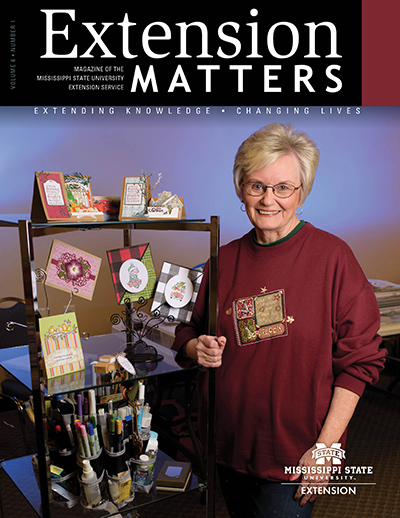Documenting Destruction

After flooding affected his fields, Clay Adcock created a survey to record non-covered costs.
Extension client spurs survey to record noncovered costs
Story by Susan Collins-Smith • Photos by Kevin Hudson
In a normal year, Clay Adcock grows 4,000 acres of corn, cotton, and soybeans. But 2019 was anything but normal.
“All of my farmland was completely flooded,” he says. “I didn’t have a crop this year. My house and shop would have flooded if I hadn’t built a levee around them and kept the water pumped out.”
Adcock was one of many affected by the extended flooding in the south Delta. About 540,000 acres stayed underwater for more than 6 months, including more than 200,000 acres of farmland.
As Adcock worked to protect his home and shop, he saw others who were spending extra money not only to protect their property, but also just to get to their jobs. He knew these costs would not be captured by the analysis done by the Federal Emergency Management Agency and the Mississippi Emergency Management Agency.
“The estimate right now is that this flood has cost $1 billion, but there are a lot of costs that won’t be included in this number,” Adcock explains. “People, including me, have spent a lot of money buying sandbags, pumps, pipe, and gas to try and keep the water out of their houses. Some people also had to drive out of their way to get to work, sometimes an hour out of their way. All of these things cost money. I’d hate for those costs to escape like they weren’t even there.”
So, he began to devise a plan to capture these extra, out-ofpocket expenses. He knew he would need help. He began looking for the right people to develop and distribute a survey. Adcock is familiar with Extension and has used the organization’s farm budget and general farm resources for years. But he didn’t realize Extension had the capability to put this survey together.
“I knew it needed to be someone who had the resources to know the right questions to ask and what would and wouldn’t be recorded and refunded by FEMA or MEMA,” Adcock explains. “I had talked to people about getting it done, and someone suggested I contact the Extension Service.”
His first call was to Emily Carter, Extension agent in Sharkey and Issaquena Counties. Carter set a meeting with Dr. Curt Lacy, Extension regional coordinator for the northwest region. Lacy called on Dr. Nicolas Ashwell, an assistant research professor, to help set up the survey. Lacy and Ashwell met with Extension agents in the affected counties to determine the best way to get the survey to people. Within a matter of weeks, the survey was on paper and in the hands of residents.
Carter says clients are the catalyst for what Extension does.
“We focus our efforts on what the community needs, and this is a great example of how Extension serves its communities,” she says. “Clay has really been a leader in the flooded counties, trying to get the word out to leaders, legislators, policymakers, and citizens about our plight, and he realized that the out-of-pocket expenses residents would have to spend due to closed roads, building levees around their homes, and buying pumps to pump water away from homes would not be documented or reported.
“We were able to quickly get a survey put together thanks to Dr. Lacy and Dr. Ashwell, who met with agents from the affected counties and worked tirelessly to get this survey published.”
Click here to learn about the results of the survey.


